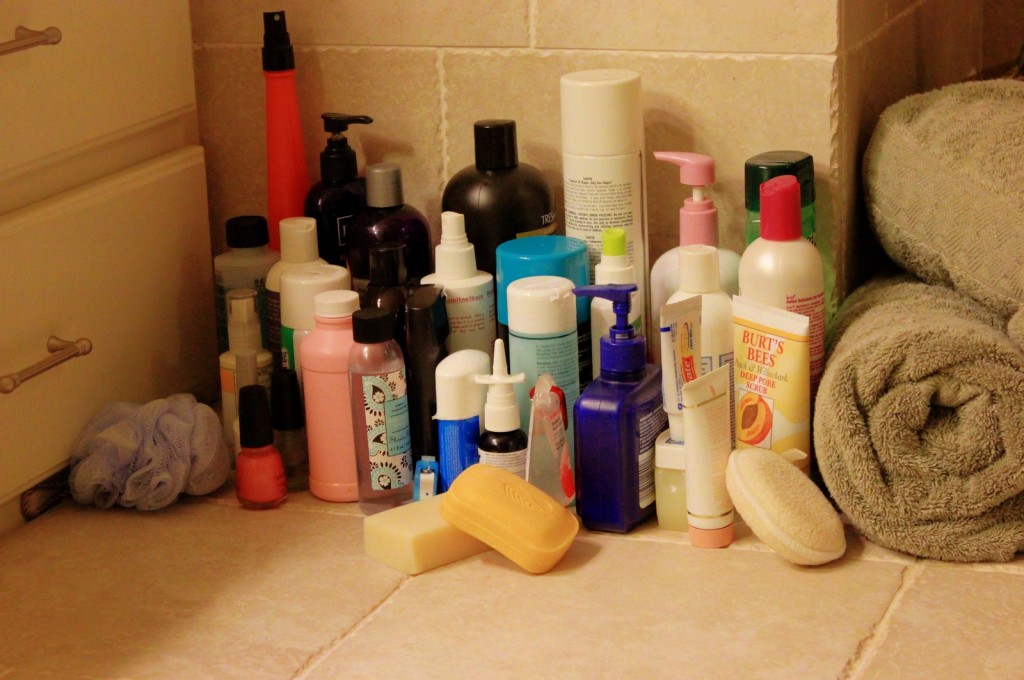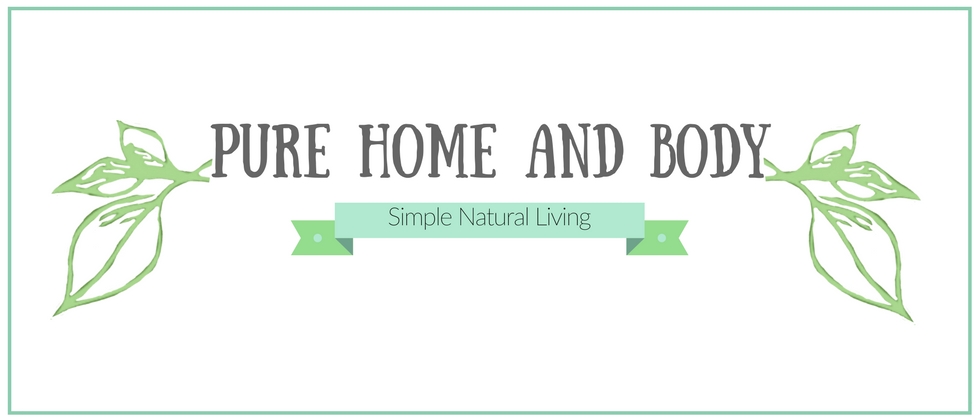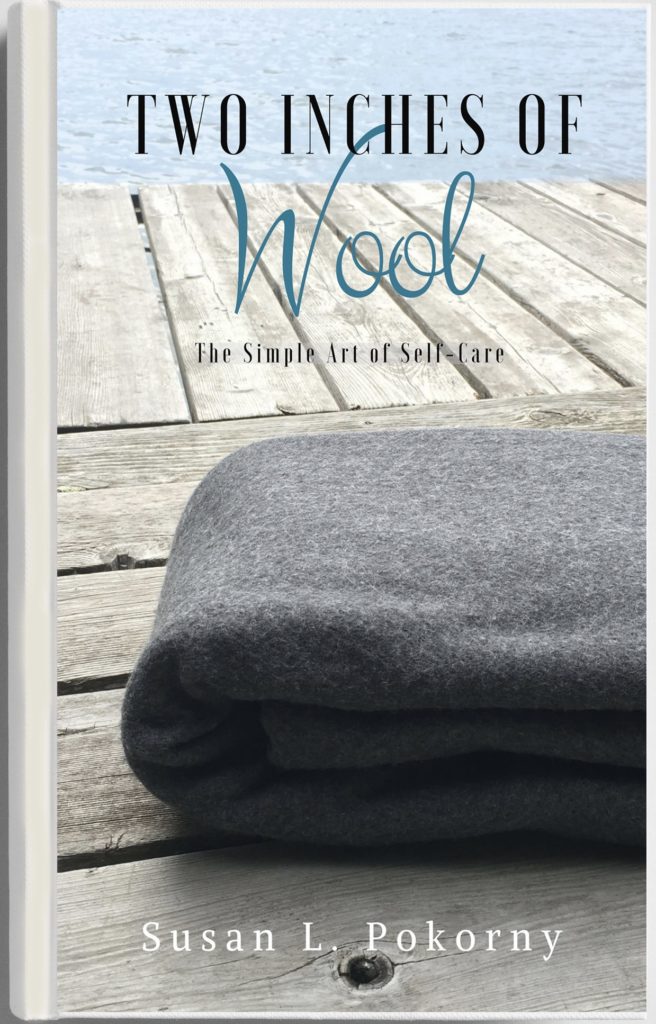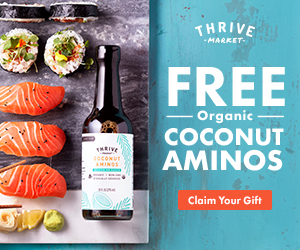 This year I’ve been trying to minimize many things in our home. I still have a long way to go with clothes, papers and stuff. One place I’ve made a lot of progress, though, is in personal & home care items and minimizing the chemicals in our household. It’s been fun, too making new recipes like a DIY Body Spray that I’ll share with you later in this article. Minimizing personal and home care products is all about consuming less, you’ll have a cleaner environment and a simpler way of living, especially if you choose non-toxic options. I’m thankful to have pure essential oils and some everyday ingredients to replace hundreds of products I might buy. It’s been years since I’ve bought specific use items for health & hygiene. The old adage you are what you eat also applies to what you put on your body. Your skin is your body’s largest organ and absorbs the substances you apply to it. Don’t you want to know what goes into your body care products? Minimize your chemical exposure where you can so you’ll have room in your toxin exposure “bank account” for unknown situations where you might encounter chemicals.
This year I’ve been trying to minimize many things in our home. I still have a long way to go with clothes, papers and stuff. One place I’ve made a lot of progress, though, is in personal & home care items and minimizing the chemicals in our household. It’s been fun, too making new recipes like a DIY Body Spray that I’ll share with you later in this article. Minimizing personal and home care products is all about consuming less, you’ll have a cleaner environment and a simpler way of living, especially if you choose non-toxic options. I’m thankful to have pure essential oils and some everyday ingredients to replace hundreds of products I might buy. It’s been years since I’ve bought specific use items for health & hygiene. The old adage you are what you eat also applies to what you put on your body. Your skin is your body’s largest organ and absorbs the substances you apply to it. Don’t you want to know what goes into your body care products? Minimize your chemical exposure where you can so you’ll have room in your toxin exposure “bank account” for unknown situations where you might encounter chemicals.
Essential oils and pure, truly natural fragrance are today what organic foods were 25 years ago. Decades ago, those eating organic foods were thought of as radical, tree-huggers, paying too much for organics for no reason. A frivolous luxury that wasn’t really necessary. At least the organic food industry was self-regulated. Today, the U.S essential oil industry is unregulated – no standards. A company could include 5% pure essential oil and a chemical filler for the rest and still call it “100% essential oil”.
Greenwashing is when a company uses words like “natural”, “pure” and “green” in products that also contain questionable ingredients, many companies are not even required to disclose all ingredients. For example, one of the most common questions I get is what do I think about Aveda? For a while, it made me uncomfortable to answer specifics about another company’s products because I didn’t want to hurt anyone’s feelings. But this is not about sharing with you what I “feel”, it’s about facts that are written on product labels. No one can dispute that. Unfortunately, there are many who are uninformed about what they are consuming. All you have to do is read the labels on your products , look up a few ingredients at www.EWG.org and you’ll have the answer.
A lot of this is a personal process, and not everyone is ready to let go of products, because they have an emotional connection. Often, love is blind. It may be just a matter of time before you can open your mind to seeing the truth in the labels, and that’s ok. I see my site as a place to direct you to resources that will answer your questions. It’s up to you to take action. I have had my share of personal battles over things I was using, but knew they weren’t the best choices. I had no idea I could make my own personal care products like a DIY Body Spray And I haven’t figured it all out,yet. I am still looking at ways to continue to improve, downsize and remove hidden chemicals in our home. All that said, when you replace chemicals in your personal and home care products, make sure it is with products of quality. Otherwise you may just be replacing one inferior product for another. Here are some simple steps to take when you’re ready to minimize your consumption of home and personal care items:
1. Clean out the cabinets – just what do you have lurking under the kitchen sink or in the linen closet? Toss out anything that is expired, broken or leaking. Start a box of products that you do not use that can be disposed of properly at a local waste management facility. Many communities have special collection sites for toxic cleaners, solvents, prescription and over the counter drugs. DO NOT dump anything down the drain. Antibiotics, drugs and household chemicals dumped down the drain will eventually enter the water supply.
2. Take inventory of what you have left and plan on using up and donate unopened products you want to get rid of. Start to research what you will replace.
3. Be authentic with yourself. Why do you love that mango body wash or Brazilian scented room spray (who exactly determined what that smells like, anyway?). Are you drawn to the graphics on the labels or was it an ad that first caught your eye? Marketing giants reach us through our senses and an entire industry is built on the Psychology of Scent. Starbucks isn’t a coffee giant by chance, they serve coffee with atmosphere, including sandalwood infused coffee cup insulators. Sandalwood essential oil is an earthy fragrance that has been used to uplift the senses. It’s also an ingredient in perfumes as a musk-like stimulant. If you want to minimize your consumption,take this critical step to realizing why you purchase products so you won’t be tempted to just replace one chemical cocktail for another. When you see advertising for what it is, you can better understand your true needs and desires and make the best choices for what you really need. You’ll naturally reduce your consumption.
4. Choose healthy alternatives to chemical products. Better yet, do without when you can.
5. Enlist your family. Change is never easy, and may be grounds for a mutiny if you instill too many changes, too quickly, without everyone’s enthusiasm. Use this opportunity to have real conversations about what is important in your family. Lorilee at Loving Simple Living has some great points on minimalism and it’s dynamic in relationships. She also just released her first book, 3-2-1 Stop. Check it out if the concept of minimalism is new to you.
6. Enjoy the extra space you have and breathe deeply the purer environment you’ll have by eliminating some more chemicals in your home.
7. Make your own products. There are so many awesome recipes on the internet now. Here’s one of my favorite DIY Body Spray recipes: Change up the essential oils to customize it to your personality and preferences. This is a women’s more feminine aroma made with YL’s Joy essential oil blend. Joy contains female supporting essential oils of Geranium, Ylang Ylang, Bergamot, Jasmine, Roman Chamomile, Coriander and Tangerine Essential Oils. Since this blend has a lot of citrus oils in it, make sure you avoid sun exposure after spritzing it on or you’ll be more prone to sun burn.
Ingredients
- Young Living Joy Blend
- 8 Ounce glass spray bottle
- 1 Drop Castile soap, unscented
- Purified water or aloe vera
Instructions
- Drop 10-15 drops of Joy essential oil blend into the glass bottle
- Add 1 drop castile soap to emulsify the mixture
- Fill remainder of glass bottle with purified water or aloe vera
- Shake well before use
What are you eliminating in your home right now? Has it been easy or difficult? I’d love to hear about what you are discovering!
Watch for my upcoming posts for more simple tips to continue creating a Pure Home and Body.














Great great article!!!! And thank you so much for the shout out. Much appreciated! Happy Friday!